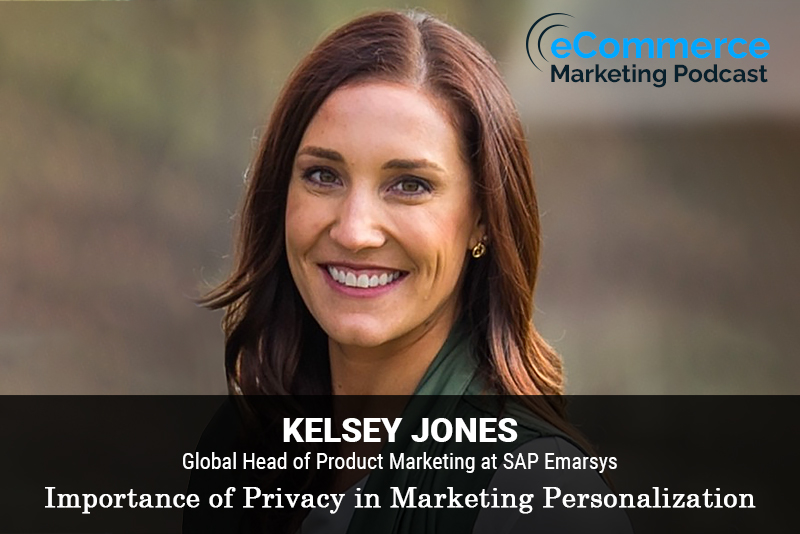
The eCommerce Marketing Podcast walks you through everything that goes into ecommerce marketing — from inbound marketing to paid advertising to conversions. Learn the strategies top marketing experts use to grow their businesses.
With over a decade in the industry, Kelsey Jones is a forward-thinking, dynamic marketing specialist. Putting strategy and sales front of mind in everything she does, Kelsey helps shape and deliver real results for customers in her role as Global Head of Product Marketing for SAP Emarsys.
In this episode, you will learn
Why is personalization so important in your messaging to customers and prospective customers
When personalizing messaging how do you securely and privately capture relevant customer info without putting their data at risk
How do you determine what data points are relevant when capturing your prospects information
What tools and resources do you need to create customer driven personalization?
Examples of some ecommerce businesses that have created effective personalized experiences that have helped them drive sales and better engage with their customers
For show transcript and past guests, please visit https://www.ecommercemarketingpodcast.com
Or on YouTube at:
https://www.youtube.com/channel/UC3PgT0NOGzpdPGQtBK0XLIQ
Follow Arlen:
Twitter: https://twitter.com/askarlen
Facebook: https://www.facebook.com/arlen.robinson.7
Instagram: https://www.instagram.com/arlenyohance/
LinkedIn: https://www.linkedin.com/in/arlenrobinson/
Past guests on the ecommerce marketing podcast include Neil Patel, Nemo Chu, Luke Lintz, Luke Carthy, Amber Armstrong, Kris Ruby and many more.
Thanks for listening. Be sure to subscribe and leave a review.

Title: Personalization and Privacy in Marketing – with Kelsey Jones
Guest: Kelsey Jones, Global Head of Product Marketing for SAP Emarsys
Host: Arlen Robinson
Summary: In this episode of the eCommerce Marketing Podcast, Arlen Robinson speaks with Kelsey Jones, the Global Head of Product Marketing for SAP Emarsys. With over a decade of experience in marketing, Kelsey shares her insights on the importance of personalization in marketing and the challenges of maintaining data privacy. She discusses strategies for effectively capturing and using customer data to create personalized marketing campaigns that build trust and drive results.
Key Takeaways:
- [00:02:29] Importance of Personalization:
- Personalization is essential for building trust with customers. Consumers expect personalized experiences, and businesses that deliver these experiences can foster loyalty and engagement.
- [00:06:52] Challenges of Data Privacy:
- Collecting and using customer data responsibly is crucial. Marketers must ensure they have proper consent and use data ethically to maintain trust and avoid potential legal issues.
- [00:09:36] Role of IT in Data Management:
- Collaboration between marketing and IT teams is vital for managing customer data. Proper governance and coordination ensure data is used effectively and securely.
- [00:14:45] Determining Relevant Data Points:
- Businesses need to focus on data points that align with their goals. Understanding what information is necessary for campaigns and customer engagement helps in capturing relevant data.
- [00:19:09] Tools for Customer-Driven Personalization:
- Adopting a customer-obsessed mindset is key. Using data to understand customer behavior and preferences allows businesses to create personalized and effective marketing campaigns.
- [00:24:22] Examples of Effective Personalization:
- Companies like Replacements Limited and Beauty Pie use data to create highly personalized customer experiences. By understanding customer needs and preferences, these brands deliver targeted and relevant content, driving engagement and sales.
Guest Info:
- Kelsey Jones
- Global Head of Product Marketing for SAP Emarsys
- LinkedIn: Kelsey Jones











